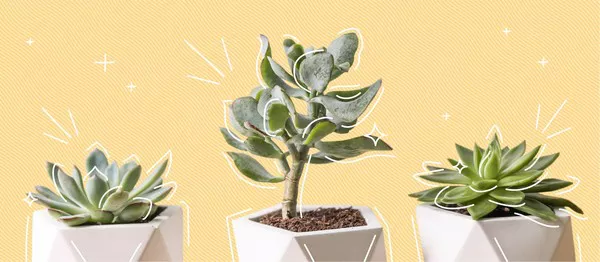Succulents, with their striking shapes and ability to thrive in arid environments, have become popular choices for indoor gardening. However, providing adequate light for succulents can be challenging, especially in spaces with limited natural sunlight. LED grow lights offer a practical solution, providing the right spectrum and intensity of light for healthy succulent growth. In this comprehensive guide, we will explore how to effectively use LED grow lights for succulents, along with tips to optimize their growth and overall health.
1. Understanding the Lighting Needs of Succulents
Importance of Light for Succulents
Succulents, like all plants, require light for photosynthesis, the process by which they convert light energy into chemical energy to fuel growth and development. In their natural habitats, succulents receive intense sunlight, making it crucial to replicate these conditions when cultivating them indoors.
Challenges of Indoor Lighting
Indoor spaces often lack the intensity and duration of sunlight that succulents need. Placing succulents near windows may not be sufficient, especially during the darker months or in rooms with limited natural light. LED grow lights provide an effective way to supplement or replace natural sunlight, ensuring that succulents receive the light they need to thrive.
2. Choosing the Right LED Grow Lights
Understanding Light Spectrum
LED grow lights are available in different color spectrums, each suitable for specific stages of plant growth. For succulents, a full spectrum LED light with a blend of blue and red light is ideal. Blue light promotes vegetative growth and compactness, while red light enhances flowering and overall plant health.
Light Intensity
The intensity of light provided by LED grow lights is measured in terms of lumens or lux. Succulents generally require high light intensity to support their growth and prevent etiolation (elongation of stems due to insufficient light). Ensure that the LED grow lights you choose have sufficient intensity for your specific succulent species.
Adjustable Light Settings
Some LED grow lights offer adjustable settings for light intensity and spectrum. This flexibility allows you to cater to the varying needs of succulents during different stages of growth, from propagation to blooming.
3. How to Use LED Grow Lights for Succulents
Determine the Light Requirements
Different succulent species have varying light requirements. Research the specific needs of your succulents to determine the ideal light intensity and spectrum for their growth.
Positioning the LED Grow Lights
Place the LED grow lights above the succulents at an appropriate distance to provide sufficient light coverage. The distance will vary depending on the light intensity and the stage of succulent growth. Generally, LED grow lights should be positioned 6 to 12 inches above the plants.
Duration of Light Exposure
Succulents require an adequate “daylight” period to promote healthy growth. Mimic natural daylight hours by providing 12 to 14 hours of light exposure per day. Using a timer for the LED grow lights ensures consistent and appropriate lighting.
Monitor and Adjust
Observe how the succulents respond to the LED grow lights. If you notice signs of stress, such as leaf bleaching or browning, adjust the light intensity or distance accordingly.
4. Supplemental Insights for LED Grow Lights Usage
Temperature Considerations
LED grow lights emit less heat compared to traditional grow lights, which is beneficial for indoor gardening. However, it’s still essential to monitor the temperature around the succulents to prevent heat stress.
Light Positioning for Even Growth
Rotate the succulents periodically to ensure even exposure to the LED grow lights. This prevents one side of the plant from receiving more light, leading to uneven growth.
Avoiding Light Burn
LED grow lights can be intense, so it’s essential to maintain the appropriate distance between the lights and the succulents. If the succulents show signs of light burn, such as leaf discoloration, raise the lights slightly.
5. LED Grow Lights and Seasonal Adjustments
Winter Light Requirements
During the darker months of winter, succulents may require more light exposure. Adjust the duration of the LED grow lights accordingly to compensate for the reduced natural daylight.
Transitioning Outdoors
If you plan to move your succulents outdoors during the warmer months, gradually acclimate them to direct sunlight to prevent sunburn. Reduce the duration of LED grow light exposure before transitioning to outdoor light conditions.
6. Long-Term Care and Observation
Regular Maintenance
Clean the LED grow lights regularly to ensure optimal performance and longevity. Dust and debris can accumulate on the light surface, reducing its effectiveness.
Observing Plant Response
Pay close attention to how your succulents respond to the LED grow lights. Healthy plants will show signs of vibrant growth, while stress or inadequate lighting may manifest as stretching or color changes.
Conclusion
Using LED grow lights for succulents is a practical and effective way to ensure their growth and well-being in indoor environments. By choosing the right spectrum, intensity, and duration of light exposure, you can provide your succulents with the lighting they need to flourish. Regular monitoring and adjustments, along with observing plant responses, will guide you in creating an optimal environment for your beloved succulents. With proper care and attention, your succulents will thrive under the gentle glow of LED grow lights, adding a touch of natural beauty to your indoor space year-round.


